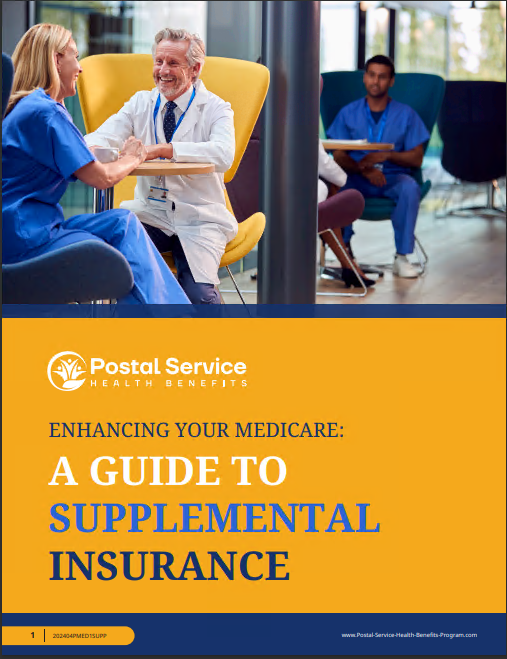Key Takeaways
- The Postal Service Health Benefits (PSHB) program offers enhanced options that can complement Medicare for USPS retirees.
- Coordinating PSHB with Medicare provides potential savings and broader coverage, especially for retirees navigating healthcare costs.
PSHB and Medicare Working Together: Why This Duo Could Save Postal Retirees Big
Retiring from the United States Postal Service (USPS) can bring both excitement and uncertainty, especially when it comes to healthcare. For retirees, one of the biggest concerns is ensuring that their medical expenses are covered without breaking the bank. With the introduction of the Postal Service Health Benefits (PSHB) program, alongside the existing Medicare system, there’s a unique opportunity for postal retirees to combine these programs and maximize their benefits. Understanding how PSHB and Medicare work together could be key to helping retirees maintain their health coverage and save on healthcare costs.
What Is the Postal Service Health Benefits (PSHB) Program?
The Postal Service Health Benefits (PSHB) program is specifically designed for USPS employees and retirees, offering a range of health insurance options. This program is part of the broader Federal Employee Health Benefits (FEHB) program but tailored to meet the unique needs of postal workers. With changes coming in 2025, many postal retirees will need to shift from the FEHB program to PSHB, a move designed to provide better access to comprehensive health insurance and reduce costs in coordination with Medicare.
The PSHB program aims to simplify healthcare coverage for USPS retirees while ensuring they have the medical services they need in retirement. For those enrolled in Medicare, PSHB is structured to work alongside Medicare, filling gaps and providing coverage for services that Medicare alone may not cover. This is a crucial point for retirees to consider when planning their healthcare strategy.
How Does Medicare Fit In?
Medicare is a federal program that provides health insurance primarily to individuals aged 65 and older. It is made up of several parts:
-
Medicare Part A covers hospital stays, skilled nursing facilities, and some home healthcare services. Most people don’t pay a premium for Part A because they paid Medicare taxes while working.
-
Medicare Part B covers outpatient care, doctors’ services, preventive services, and medical supplies. Retirees typically pay a monthly premium for this coverage.
-
Medicare Part C or Medicare Advantage Plans are an alternative way to receive Medicare benefits, often combining Parts A, B, and sometimes D, which covers prescription drugs.
-
Medicare Part D covers prescription drugs and is often necessary for managing the high cost of medications in retirement.
Retirees can enroll in Medicare during their Initial Enrollment Period around the time they turn 65. For USPS retirees, combining PSHB with Medicare can enhance their coverage and potentially lower their overall healthcare expenses.
The Benefits of Combining PSHB with Medicare
For postal retirees, understanding how PSHB and Medicare can complement each other is crucial. This powerful combination can offer broader coverage and reduce out-of-pocket costs for retirees who may otherwise face gaps in their healthcare. Here’s why:
1. More Comprehensive Coverage
PSHB plans are designed to fill in the gaps left by Medicare. While Medicare provides solid baseline coverage, there are many things it doesn’t cover. For example, Medicare Part A only covers hospital stays up to a certain point, and Medicare Part B has deductibles and coinsurance. PSHB can cover additional costs like deductibles, copayments, and services not fully covered by Medicare. This means that retirees are less likely to face unexpected medical bills, which can be a significant relief for those living on a fixed income.
2. Lower Out-of-Pocket Costs
One of the biggest advantages of coordinating PSHB with Medicare is the potential for reduced out-of-pocket costs. When Medicare is your primary insurance and PSHB is secondary, many costs that Medicare doesn’t cover—such as coinsurance and deductibles—are picked up by PSHB. This coordination can result in fewer direct healthcare expenses for the retiree, which is especially beneficial for those managing chronic conditions or requiring frequent medical care.
3. Access to a Broader Network of Providers
Medicare has its own network of providers, and sometimes finding a Medicare-covered provider can be a challenge depending on where you live. However, with PSHB working alongside Medicare, retirees can often access a broader range of doctors and hospitals. This can be a significant benefit for retirees who have preferred doctors or specialists that may not be fully covered under Medicare alone.
4. Prescription Drug Coverage
While Medicare Part D provides prescription drug coverage, it can come with significant out-of-pocket costs depending on the medications needed. Many PSHB plans include robust prescription drug coverage, which can supplement Medicare’s offerings and provide better financial protection against high drug costs. This is particularly important for retirees who rely on medications to manage chronic health conditions like diabetes or high blood pressure.
5. Preventive Services and Wellness Programs
Both Medicare and PSHB emphasize preventive care and wellness, but combining the two can provide additional benefits. While Medicare covers many preventive services like screenings and vaccinations, PSHB plans may offer expanded wellness programs, including fitness programs and health coaching, that Medicare alone does not. Access to these services can help retirees maintain their health and avoid costly medical problems down the road.
How to Enroll in PSHB and Coordinate with Medicare
For current USPS employees approaching retirement, it’s essential to understand how and when to enroll in PSHB and Medicare to maximize the benefits of both. Here are some practical steps to help you get started:
Step 1: Understand the PSHB Enrollment Process
Starting in 2025, USPS retirees will need to transition from the FEHB program to PSHB. Make sure you are familiar with the enrollment deadlines and any necessary paperwork to ensure a smooth transition. Current USPS employees should receive detailed information about the PSHB options available to them as they approach retirement.
Step 2: Enroll in Medicare on Time
It’s critical to enroll in Medicare during your Initial Enrollment Period, which starts three months before you turn 65 and lasts for seven months. Missing this window can result in penalties, so be sure to mark your calendar and complete the enrollment process on time. If you are already enrolled in Medicare, ensure that you understand how to coordinate your benefits with PSHB once you transition.
Step 3: Review Your Coverage Options Annually
Healthcare needs can change over time, and both PSHB and Medicare offer annual enrollment periods. Take advantage of this opportunity to review your coverage, assess your healthcare needs, and ensure that you have the right combination of benefits. Keeping track of changes to both programs can help you stay ahead of rising healthcare costs and avoid gaps in your coverage.
Making the Most of Your Postal Retiree Benefits
The combination of PSHB and Medicare can provide USPS retirees with a robust safety net for managing their healthcare in retirement. However, it’s important to stay informed and proactive about your options. By understanding how these two programs work together, retirees can make informed decisions that protect both their health and their finances.
It’s always a good idea to consult with a licensed insurance agent to explore the best ways to maximize your coverage. Agents can help clarify how to coordinate PSHB with Medicare and ensure that retirees are taking full advantage of the benefits available to them.
Taking Control of Healthcare in Retirement
Retirement can be a time of financial adjustment, but by coordinating PSHB with Medicare, USPS retirees can gain peace of mind. This powerful duo offers the potential to reduce out-of-pocket costs, expand coverage, and ensure access to necessary healthcare services. For postal retirees, it’s worth exploring how these programs can work together to provide a more secure and affordable healthcare future.






